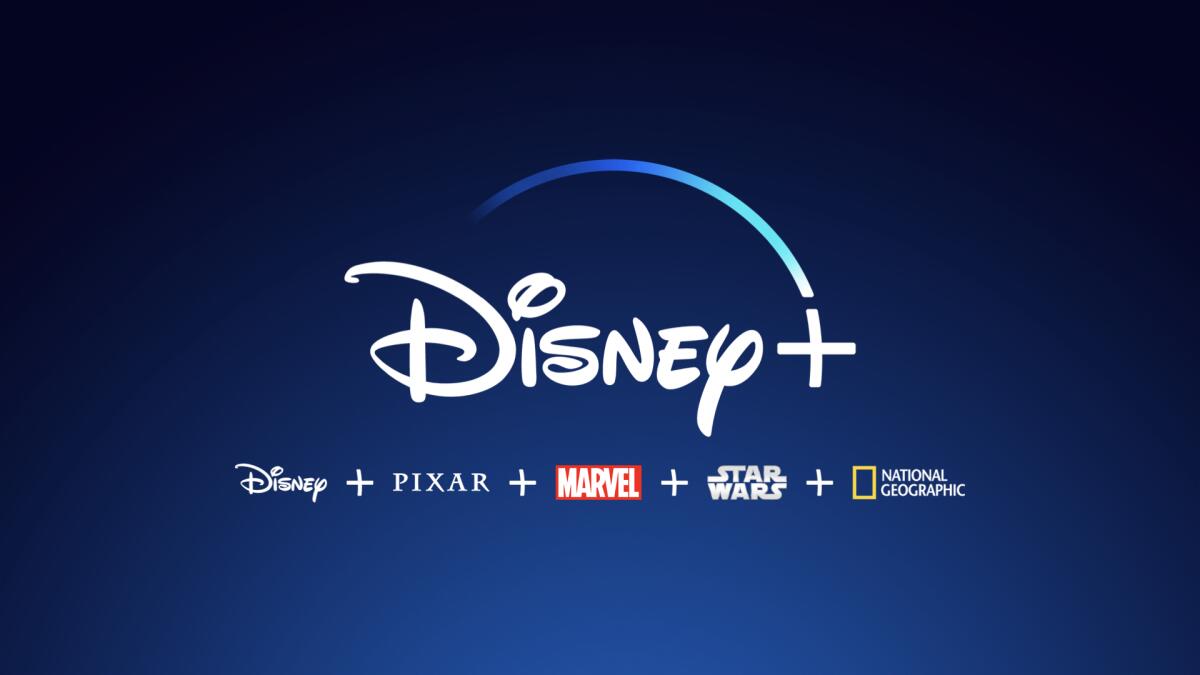Disney+ hits 95 million subscribers as earnings beat expectations

- Share via
Walt Disney Co. said Thursday its marquee streaming service Disney+ grew to nearly 95 million subscribers during the first quarter of its fiscal year, while the pandemic continued to weigh on the entertainment giant’s finances.
The Disney+ subscriber count of 94.9 million is up from the 86.8 million the company reported in December during a presentation for analysts.
Since the last quarter ended in October, Disney+ has added about 21 million subscribers. Though a significant portion of Disney+’s subscriber count comes through Disney’s bundle with its Hotstar service in India, the growth represents a positive sign for a service considered key to its future.
Inside the business of entertainment
The Wide Shot brings you news, analysis and insights on everything from streaming wars to production — and what it all means for the future.
You may occasionally receive promotional content from the Los Angeles Times.
Disney reported earnings that were far worse than a year earlier but were not as bad as Wall Street expected.
Net income fell 99% to $29 million during the three months that ended Jan. 2. In the previous first quarter, Disney had a profit of $2.13 billion. The company’s earnings of 32 cents a share, excluding certain items, were much better than the loss of 34 cents Wall Street analysts expected, according to data firm FactSet. Quarterly revenue fell 22% to $16.2 billion, but that also topped analyst expectations of $15.9 billion.
Disney’s report comes just two months after the company announced a major increase of programming for its streaming services, with the aim of bringing at least 100 titles to Disney+ annually. It teased content including a series about “Star Wars” character Lando Calrissian, a live-action “Pinocchio” film, a “Moana” series and a “Guardians of the Galaxy” holiday special. The company hopes a regular supply of new content will keep new subscribers signing up and persuade current customers to stay.
This month Disney said “Black Panther” director Ryan Coogler would develop a series for Disney+ set in the land of Wakanda as part of an exclusive deal to produce TV content for the company. During the Super Bowl on Sunday, Disney advertised the upcoming release of the animated fantasy “Raya and the Last Dragon” to Disney+ through its “premier access” model, which charges an additional $30 fee to watch the film.
“Our goal is to increasingly put the consumer in charge and let them decide when and how they want to enjoy our one-of-a-kind entertainment offerings,” Disney Chief Executive Bob Chapek said in a call with analysts.
Disney is banking on Disney+ and its other streamers to cement the Mouse House as a global entertainment superpower for years to come. The company in December set its sights on reaching as many as 260 million Disney+ subscribers by the end of fiscal 2024. The company’s total subscriber base for all its services — including Hulu, ESPN+ and Star — is expected to reach 300 million to 350 million in that time.
Disney+ numbers were boosted by high-profile releases, including the second season of “The Mandalorian” and the Pixar film “Soul,” which hit the service on Christmas. The service also recently put out the quirky Marvel series “WandaVision” to strong reviews and is set to follow up later this year with “Falcon and the Winter Soldier.” About 30% of Disney+’s global subscriber base comes through its Hotstar offering in India and Indonesia.
Hulu now has 39.4 million subscribers, while ESPN+ counts 12.1 million, bringing Disney’s direct-to-consumer business to more than 146 million.
Revenue from the direct-to-consumer businesses surged 73% to $3.5 billion in the first quarter, while losses decreased significantly, helping the company’s overall results. Disney’s streaming arm lost $466 million during the quarter, compared with $1.1 billion a year earlier, thanks in part to subscriber growth at Hulu.
Streaming’s growth at Disney has been a boon for shareholders, sending the stock to record levels while the pandemic buffets other parts of the business. Shares rose about 2% in after-hours trading, after closing at $190.91.
Disneyland in Anaheim has been shut down since March because of the spread of COVID-19, and attendance at Walt Disney World has suffered from capacity restrictions. Disneyland is not expected to reopen during the current quarter, Disney said.
The movie studio’s big releases, including “Black Widow,” have been delayed multiple times. “Black Widow” is currently scheduled for a May theatrical release, though Chapek told analysts the company is watching the state of the pandemic “very, very carefully.”
Amid the pandemic, Disney has laid off thousands of workers across the company, slashed executive bonuses and pared assets. This week Disney said it would close animation house Blue Sky Studios, known for the “Ice Age” movies, thus cutting 450 employees. The axing of the former Fox brand came after the decision to eliminate Radio Disney in December.
The quarterly report also follows a major restructuring that Chapek enacted in October to center the entertainment behemoth’s media and entertainment businesses on the company’s high-priority streaming efforts.
Earnings at Disney’s parks, experiences and products business — which includes cruise lines, the resorts as well as merchandise — continued to erode. The segment posted a loss of $119 million compared with an operating profit of $2.52 billion a year earlier. Revenue was down 53% to $3.59 billion. Disney said the COVID-19 pandemic resulted in a $2.6-billion decrease in operating income during the quarter.
The newly minted media and entertainment distribution segment — which includes studios, TV networks and streaming services — generated $1.45 billion in operating income, down 2% from the prior year. Total sales for the division fell 5% to $12.7 billion.
Within the company’s “linear networks,” including broadcast and cable channels, profits fell 4% to $1.73 billion. The company’s broadcasting business was boosted by political advertising during the presidential election. However, ESPN took a hit because of increased programming costs tied to airing six college football bowl games compared with three a year earlier, and four NBA finals games that normally would have been scheduled for the prior year.
ABC suffered from lower advertising revenue, but Chapek gave a shout-out to programming on the old-school broadcast network, including the recent successful drama “Big Sky” and news shows “Good Morning America” and “World News Tonight.”
More to Read
Inside the business of entertainment
The Wide Shot brings you news, analysis and insights on everything from streaming wars to production — and what it all means for the future.
You may occasionally receive promotional content from the Los Angeles Times.










